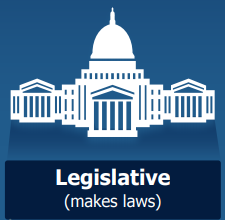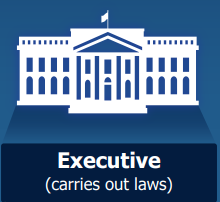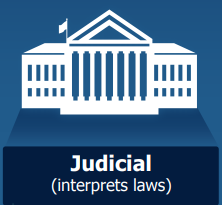The Constitution ~ Lesson 3 The Checks and Balances of the Government

The Constitution set up a system of checks and balances. This system was to make sure that none of the three branches of government would become too strong.
Checks and Balances
The new Constitution had three branches of government:
Legislative (make laws)
|
Executive (carry out laws)
|
Judicial (courts)
|
|||||||||||||||||
Go to the online quiz for Lesson 3.


